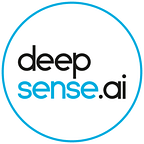Computer vision in Smart Factories
Computer vision is a foundational element of Smart Factory solutions. At deepsense.ai we have created diverse AI-driven, automated computer vision-based solutions that undertake the most demanding challenges in many different production lines.
The integration of advanced technologies with production lines makes it possible to automate and optimize a range of key production processes. A foundational element in Smart Factory solutions is computer vision. By using artificial intelligence and training models that are able to properly interpret images from, for example, industrial cameras set up at the factory, we can effectively monitor production processes and identify potential adverse events. At deepsense.ai we have created diverse AI-driven, automated computer vision-based solutions that undertake the most demanding challenges in many different production lines. By combining visual control technology with machine learning, deepsense.ai is able to address problems to which simple solutions based on human efforts don’t work.
Quality control
Computer vision and advanced data analysis are increasingly enlisted to take over human-performed quality control. There is little wonder as to why: automatic quality control is more accurate and faster as well as based on image analysis, we can effectively monitor diverse components of production, including:
- detecting surface irregularities
- assessing defect severity
- detecting contamination
- verifying labels
- checking product completeness
- segmenting defects
Intelligent quality control systems developed by deepsense.ai are able to identify 99% of product defects, which significantly reduces the need for manual quality control and in turn lowers costs.
Workflow optimization
Workflow optimization becomes a key aspect of profitability and the scalability of production lines. Creating a “digital twin” of a facility can significantly improve its operations. The virtual version of the factory can be used not only in 3D modeling but also as a part of an augmented reality solution.
A workflow optimization project deepsense.ai did involved recognizing and classifying the connection structure of devices based on data points produced by high-resolution scanners. Based on computer vision, the AI-based system identified connections between the devices in order to establish how well the installation’s structure matched already existing diagrams. The solution significantly reduced the human effort needed to process laser scans of industrial facilities.
Worksite safety
Intelligent computer vision-based systems keep workplaces safe by intelligently monitoring such visual data as CCTV footage. The Covid-19 pandemic has underscored the importance of compliance with safety procedures, including monitoring the distance between workers, the amount of time being spent near other workers and contact tracing. Such monitoring solutions effectively prevent incidents and detect potential threats in areas including:
- identifying violations of safety regulations
- automatically recognizing and authorizing employees
- monitoring the use of personal protective equipment such as hard hats, high visibility jackets, protective glasses and any other protective equipment needed
- detecting potentially hazardous events like: obstacles, spills, fire hazards, tools left in inappropriate places or blocked escape routes
Automated monitoring of the hazardous zones in a factory was another of deepsense.ai’s recent projects. The system we designed tracks whether every worker is following required safety measures. If not, it sends an instant alert to the supervisor with a detailed description of the event that is occuring. The system has significantly lowered accidents and hazardous events metrics.
Technology
Some problems can be described precisely (e.g., a pipe’s diameter has to be exactly 50mm), but deepsense.ai technology is also able to understand problems that can’t be. Our algorithms learn complex patterns and detect features the human eye fails to see. This allows us to identify anomalies and defects that were not previously observed or for which no training data has been provided.
The modular architecture of AI models analyzes all video streams in real time, identifying potential defects and checking for anomalies.
Our custom-designed neural networks follow recent advancements in machine learning and are pre-trained on a massive, cross-sectional dataset of diverse worksite imagery. This enables us to take on virtually any computer vision challenge.
Network architectures are selected based on the function and purpose of individual models, some of which include:
- a wide range of convolutional neural networks (CNNs), including: Faster-RCNN, Mask-RCNN, YOLO, SSD, RetinaNet
- long short-term memory networks (LSTMs)
- generative adversarial networks (GANs)
- variational auto encoders (VAEs)
- custom architectures designed to meet specific customer needs
Our solutions can be implemented on existing monitoring hardware, limiting the need for additional investments. You may need to upgrade current operations, or to build a new one from the ground up. Whichever the case, in delivering industry-leading solutions, deepsense.ai models success.
